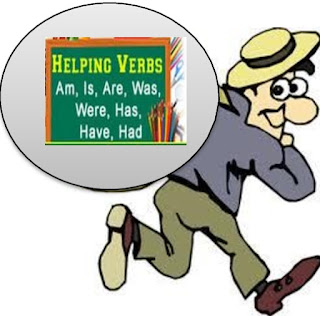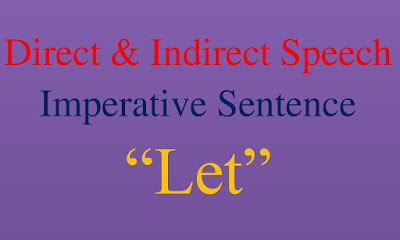Lesson Plan of Helping Verbs English Grade V
Lesson Plan of Helping Verbs
English Grade V
Students’ Learning Outcomes
·
Demonstrate the use of be, do
and have as main and helping verbs in sentences.
Information for Teachers
·
Helping verbs help the main verb describe action that
happened in the past, is happening in the present, or will happen in the
future.
·
Main verbs have meaning on their own (unlike helping
verbs). There are thousands of main verbs. Such like: watch, clean, see, run,
speaks, divide, collect, copy, construct, etc.
·
Helping verbs are also called “auxiliary verbs”. We usually
use helping verbs with main verbs. They “help” the main verb (which has the
real meaning).
·
Helping verbs ('auxiliary verbs') have no meaning on their own
·
Helping Verbs. Helping verbs perform other specific tasks to
further modify the action or meaning of the main verb.
·
A helping verb helps us know when the action of verb happened.
It tells the tense of the verb.
·
Some sentences have more than
one verb. They have a main verb-the verb that shows the main action or state of
being. They also have a helping verb.
·
A helping verb always comes before the main verb in a
sentence.
(For example: I am reading my
favorite novel. (Am helping verb, reading main verb)
·
The verb be, have, and do can be used as main verbs or as the helping/auxiliary verb.
·
The verb be used as a helping verb to make continuous
tenses.
(For example: He is watching
cartoons. (Is as the helping verb, watching as the main verb)
·
The verb have is used as a helping verb to make perfect
tenses.
(For example: I have finished
my class work. (Have as the helping verb, finished as the main verb)
·
The verb do is used as a helping verb to ask questions,
make negatives and to make emphasis
o For example: Do you sleep early at night? (Do
as the helping verb, sleep as the main verb)
o She doesn’t drink coffee. (Does as the helping
verb, drink as the main verb. The word “not” is not part of the verb)
o I do sleep early. (do as the helping verb,
sleep as the main verb)
·
Time allocation is flexible
and can change as per need of the activity.
·
This lesson must be practiced
in another lesson till students understand the concept.
Material / Resources
Chalk/marker, board, textbook
Worm up activity
·
Note: The students studied
the use of verbs be, done and have as helping and main verbs in the previous
grades.
o Write a sentence on the board and ask students
to identify the verb in it. E.g. she is walking on the road.
o If students identify both verbs (is, walking),
praise them. If they give only one verb, tell them that there are two verbs in
the sentence.
·
Underline the verbs as
students say them. Tell the students that one verb is the helping verb and one
verb is the main verb in the sentence. Ask students to identify them.
·
Praise the students if they
identify the helping verb (is) and the main verb (walking).
·
Re-teach them briefly about
helping verbs and main verbs if they didn’t identify correctly.
·
Reinforce that am, is, does
are used for singular nouns, had can be used for both singular and plural,
were, have, do, did are used for plural nouns. Tell the students about the
exceptions for ‘I’ and ‘you’
Development
Activity 1
·
Ask students to take out
their textbooks.
·
Read aloud a sentence from
the textbook in which verb be, do or have is used as a main verb. Ask one of
the students to identify whether the verb is used as a main verb or a helping
verb.
·
Praise the students if he/she
gives correct response. If the student did not give correct response. Ask
another student to explain to him why his/her response was not correct.
·
Re-ask the first student to
look in the book and read another example.
·
Ask different students to
give examples of the sentences and tell whether the verbs am, is, was, were,
have, has, had, do, done, did are used as main or helping verbs.
·
Do the activity as long as
time allows.
Activity 2
·
Write am, is, are, was, were,
have, has, had, do, does, did on the board.
·
Ask the students to take out
their notebooks.
·
Tell the students to make one
sentence using each verb as a helping verb.
·
Students may have problem
using do, did, does as helping verbs. You can write one example on the board if
they need help. E.g. please do come to the wedding. He does cleaning. She did
count the eggs.
·
Give the students some verbs
to use as main verbs with am, is, are, was, were, have, has, had, do, does,
did. Do this only if students have difficulty thinking verbs.
·
Move around to monitor
students are working. Provide help to the students where and when need.
·
Some students learn fast than
others and their work quickly. Make such students help the students who are
slow learners.
·
Students learn better from
peers, but keep an eye on them to ensure they are working together.
Sum up / Conclusion
·
Sum up the lesson by asking
students would they be able to recognize be, do, and have verbs as main or
helping verbs where ever they read or hear in their school book, story books,
magazines, television.
Assessment
·
Assess students’
understanding of helping and main verbs through their correct responses during
worm up activity.
·
Assess students’ ability to
identify and distinguish between be, do and have as main and helping verbs
during the activity 1.
·
Assess students’ ability to
make simple sentences with be, have and do as main and helping verbs through
the activity 2 and follow up.
·
Arrange a written test after
few days to further assess students’ ability to use verbs be, have and do as
main and helping verbs.
Follow up
·
Give students five verbs am,
is, are, was, were, have, had, did and ask them to make sentences using them as
main verbs.




Comments
Post a Comment